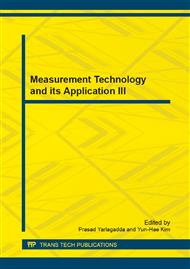p.1839
p.1843
p.1850
p.1859
p.1865
p.1869
p.1875
p.1880
p.1885
Analysis of Localizer Over-Bending at Coastal Airport
Abstract:
Inaccurate alignment with the runway centerline caused by localizer over-bending, will make the aircraft’s approach unstable, and hinder the timely and correct establishment of landing configuration, even threat the safety of aircraft. Targeting at the problems above, and according to the actual operational circumstance of coastal airport ,this paper, based on the performance specification of instrument landing system and character analysis of localizer over-bending at coastal airport, presents the relationship between localizer bending extent and the distance from the runway centerline to the coastline. Meanwhile, corresponding mathematics model is built and related simulations have been done, which effectively enhance the crew’s situation awareness of localizer over-bending and improve the aircraft’s landing safety at coastal airport.
Info:
Periodical:
Pages:
1865-1868
Citation:
Online since:
June 2014
Authors:
Price:
Сopyright:
© 2014 Trans Tech Publications Ltd. All Rights Reserved
Share:
Citation:


